VISUAL ESSAY
SA rhino translocation lands Mozambican national park Big Five status
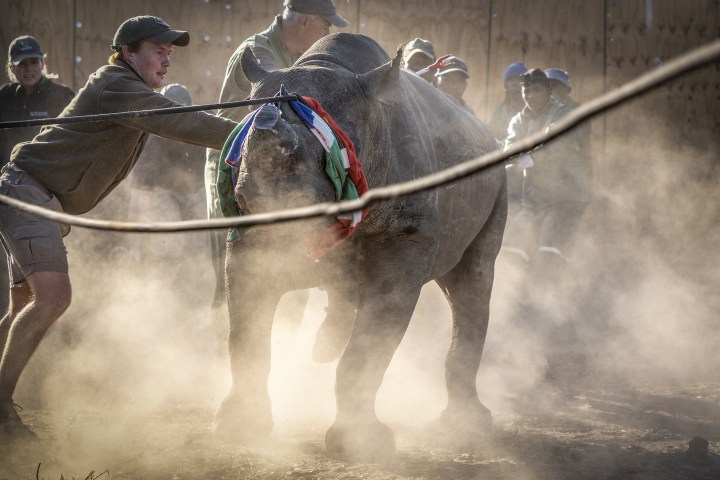
Black rhino are being moved from Limpopo to Mozambique in a partnership project to establish a viable breeding population of rhinos in a Mozambican national park for the first time in decades.
Teams were up at the crack of dawn. They had all been assigned their tasks the day before and although nervous, there was excitement in the air. A monumental task lay ahead — to translocate several black rhino from the Manketti Game Reserve in Limpopo to the Zinave National Park in Mozambique in the longest road transfer of rhinos yet attempted.
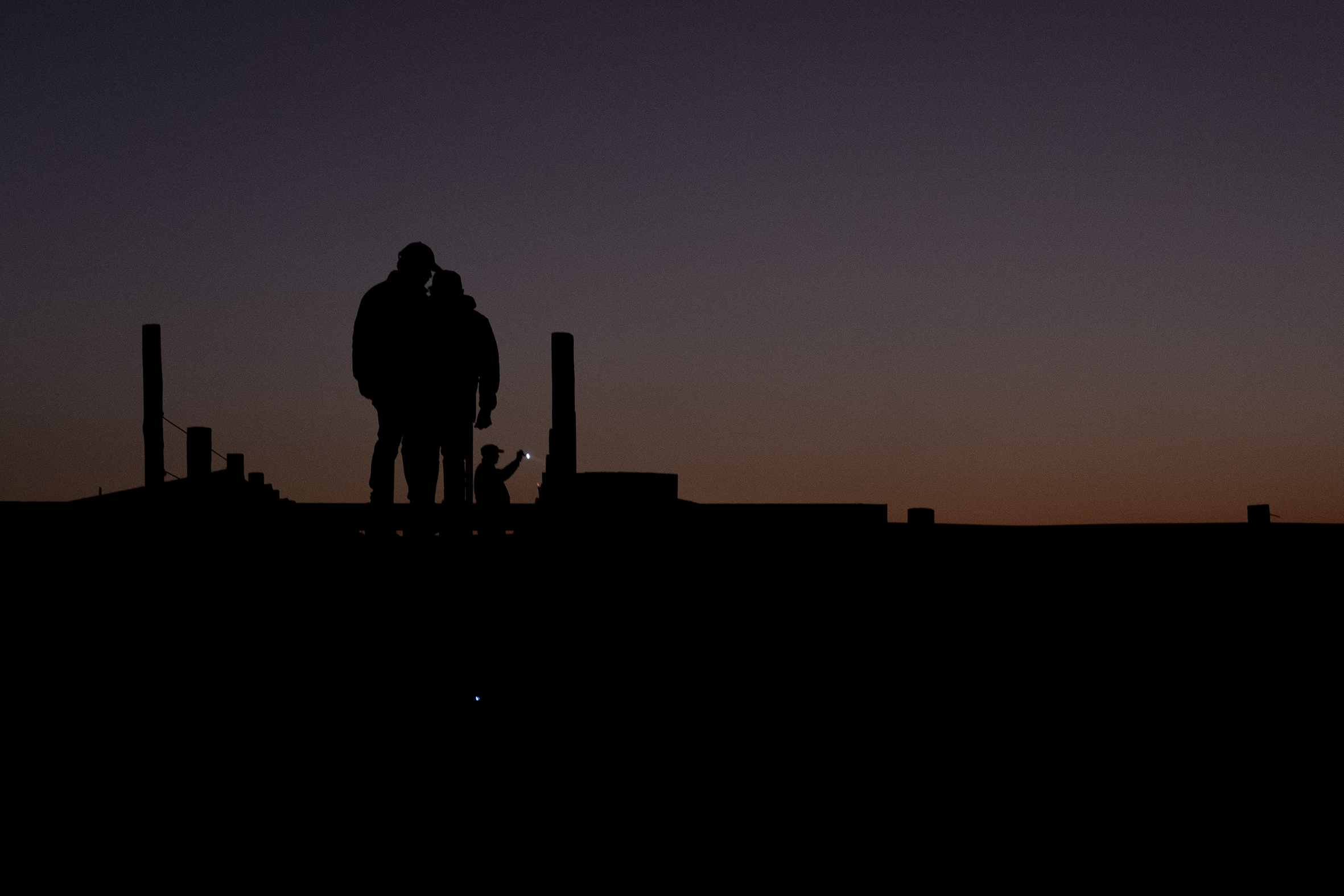
Conservationists stand atop a walkway before dawn before loading the rhinos into transportation crates. (Photo: Shiraaz Mohamed)
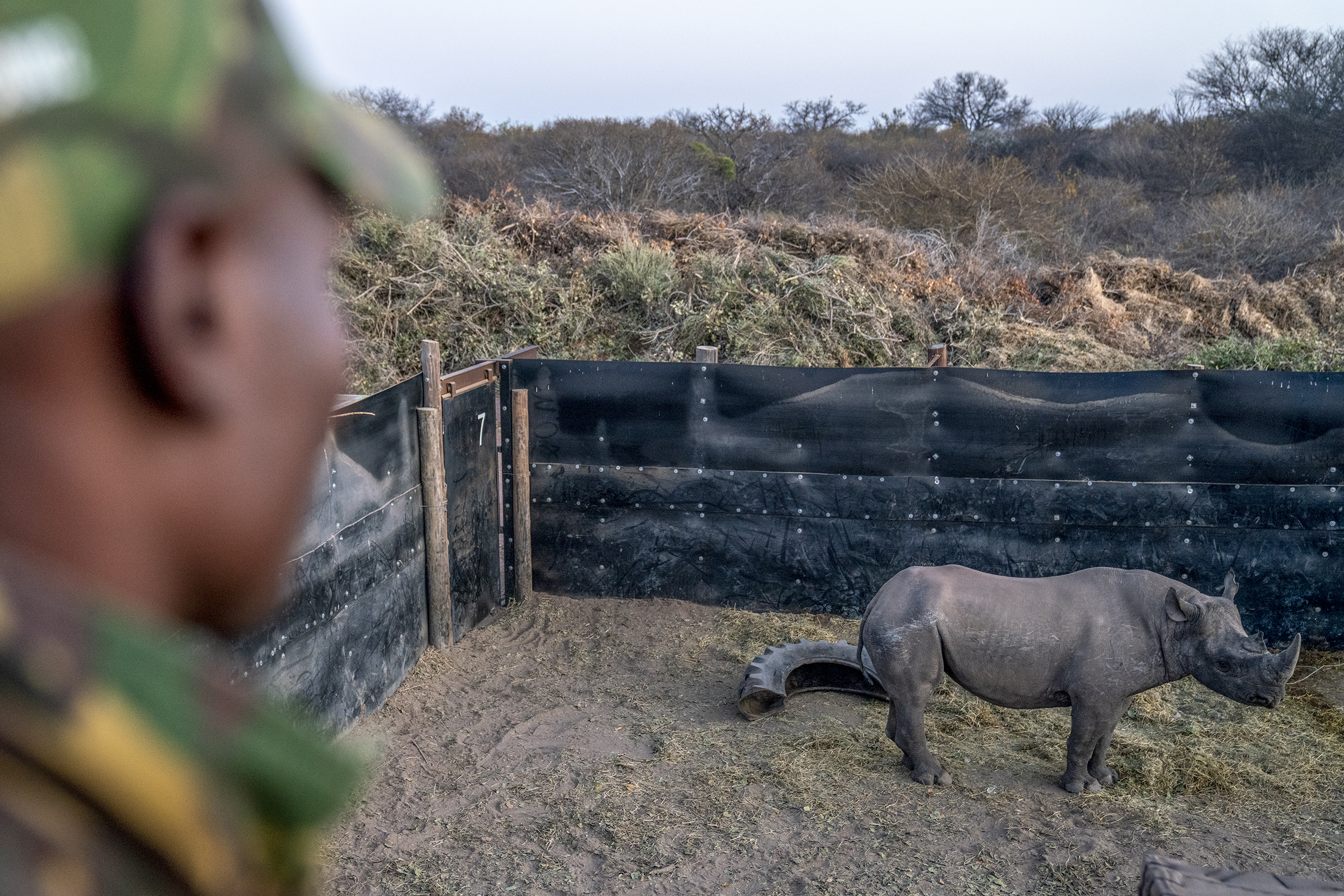
A ranger watches over a black rhino. (Photo: Shiraaz Mohamed)
The project comes after the successful reintroduction of 19 white rhino to Zinave two months earlier. It is part of a partnership initiative between mining and renewable energy solutions company Exxaro Resources, the Peace Parks Foundation and Mozambique’s National Administration for Conservation Areas. The initiative is also supported by the governments of Mozambique and South Africa.
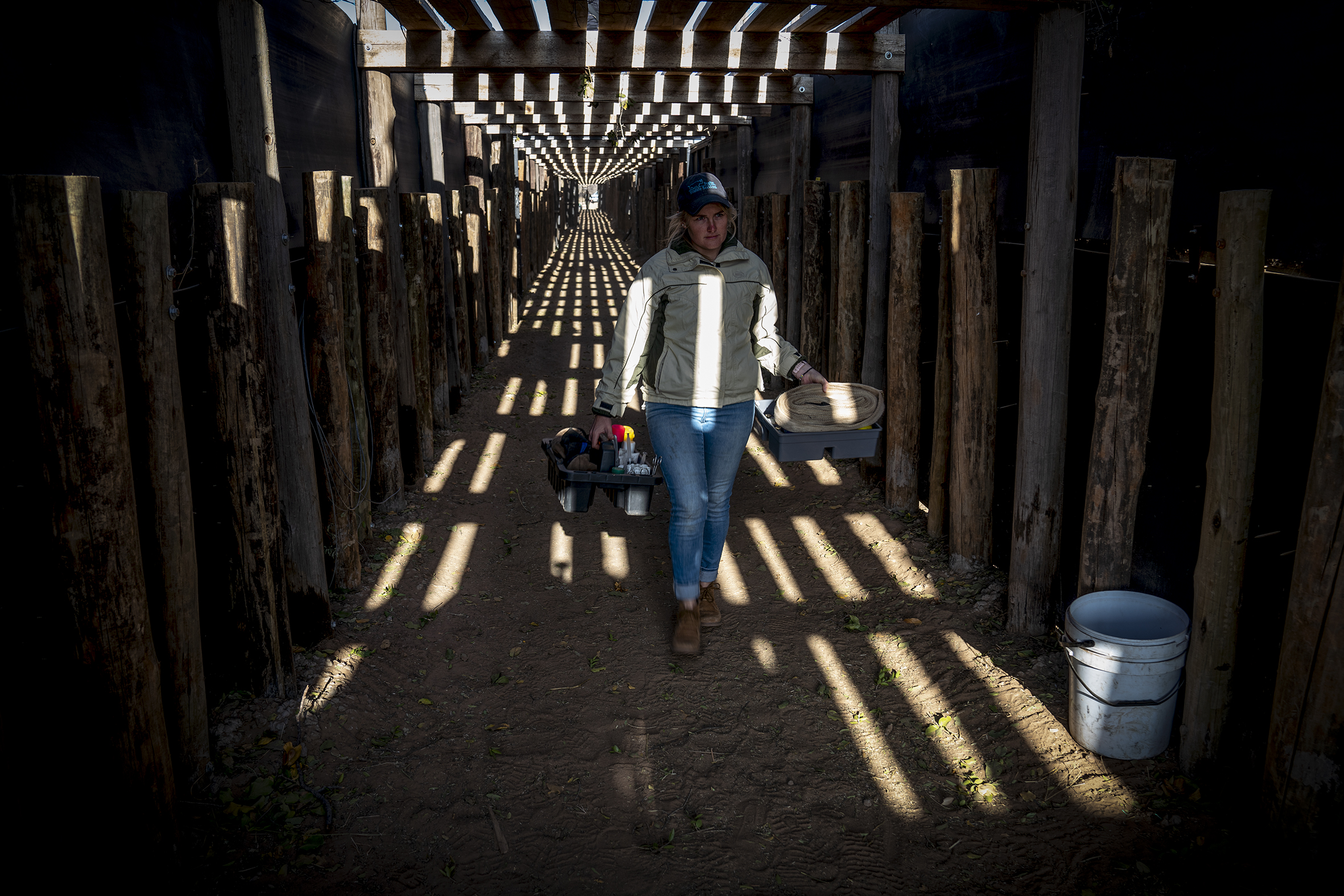
A member of the veterinary team carries equipment as several black rhinos are loaded into crates (not in frame). (Photo: Shiraaz Mohamed)
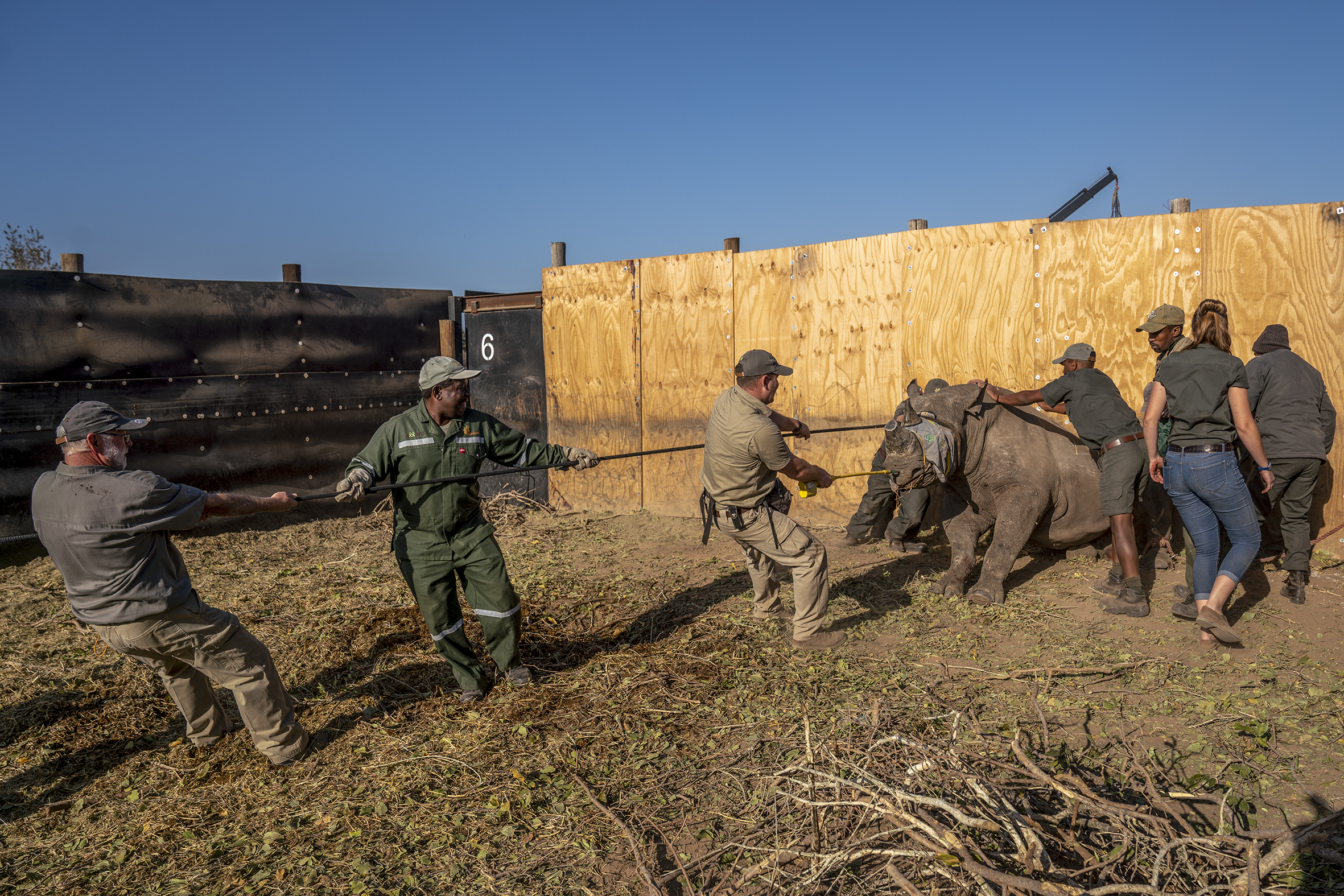
The reintroduction of the rhino population will take place over a few years and will see the translocation of more than 40 of the animals. (Photo: Shiraaz Mohamed)
According to Exxaro Resources, rhino populations have plunged in all nine remaining rhino range states in Africa. Since 2008, more than 8,000 animals have been killed for their horns in South Africa alone. Beyond its extinction in Mozambique, the black rhino suffered a radical decline across its entire native range. Between 1960 and today, its numbers — scattered sparsely from Kenya down to South Africa — dropped by 98% to fewer than 6,000.
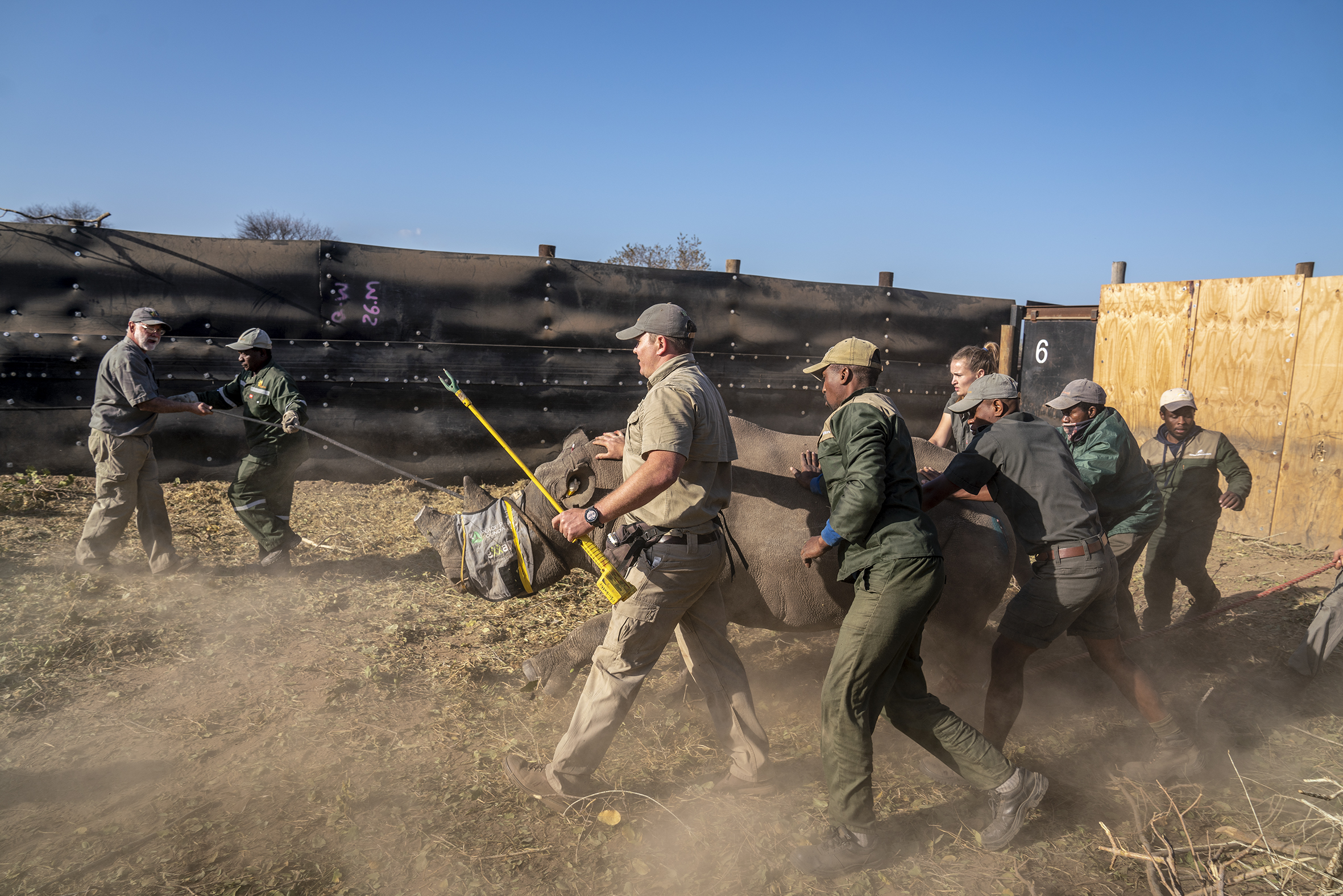
The pioneering rewilding initiative took several months to prepare and to help them adapt, the rhinos were kept in specially built bomas for about three months. (Photo: Shiraaz Mohamed)
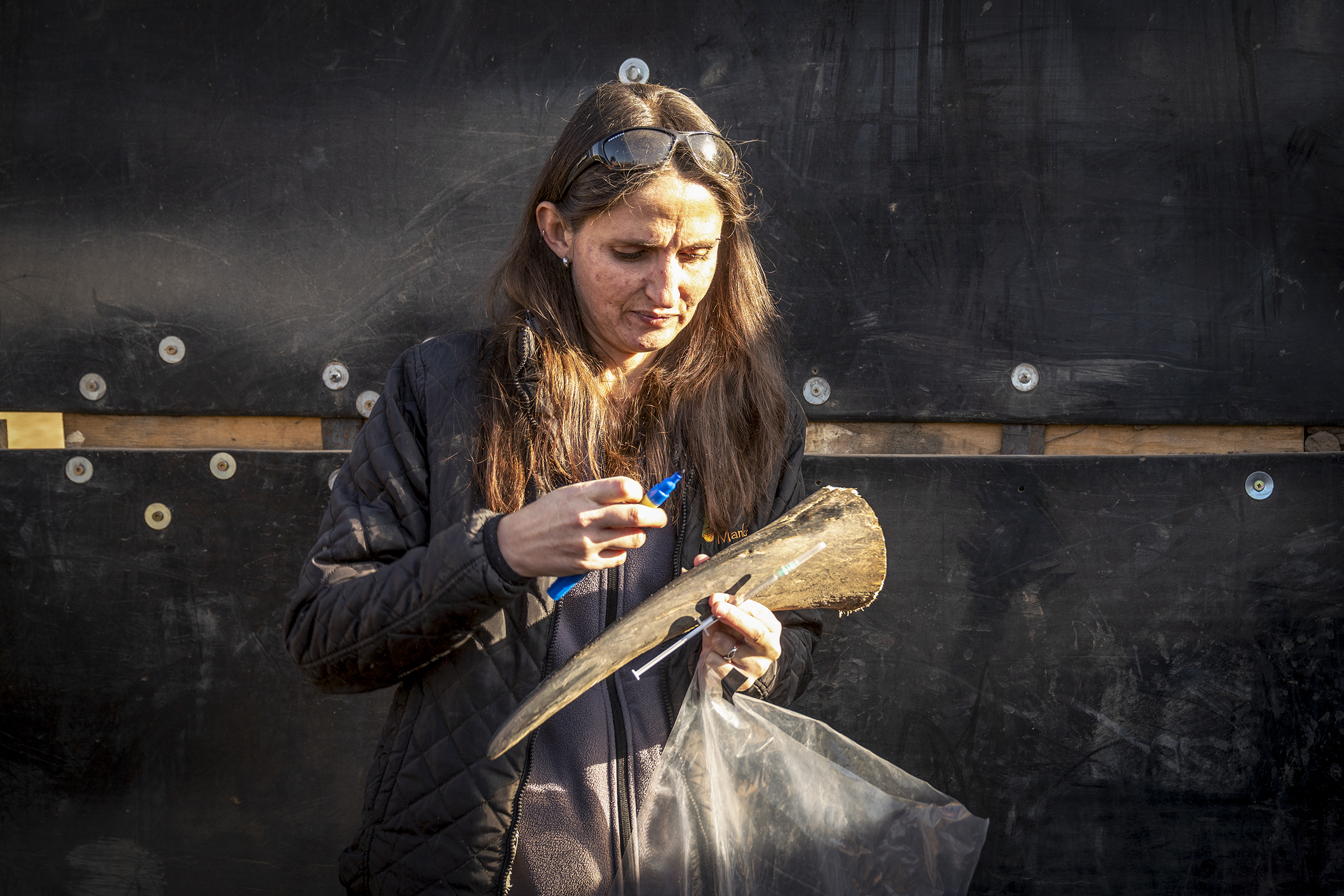
As part of the translocation process, horns were removed, which also aided in providing the rhinos more space in their relocation crates. (Photo: Shiraaz Mohamed)
The pioneering rewilding initiative took several months to prepare. To help them adapt, the rhinos were kept in specially built bomas for about three months. Transport crates were prepared and the rhinos were given food and water inside the crates to prepare them for their very long journey.
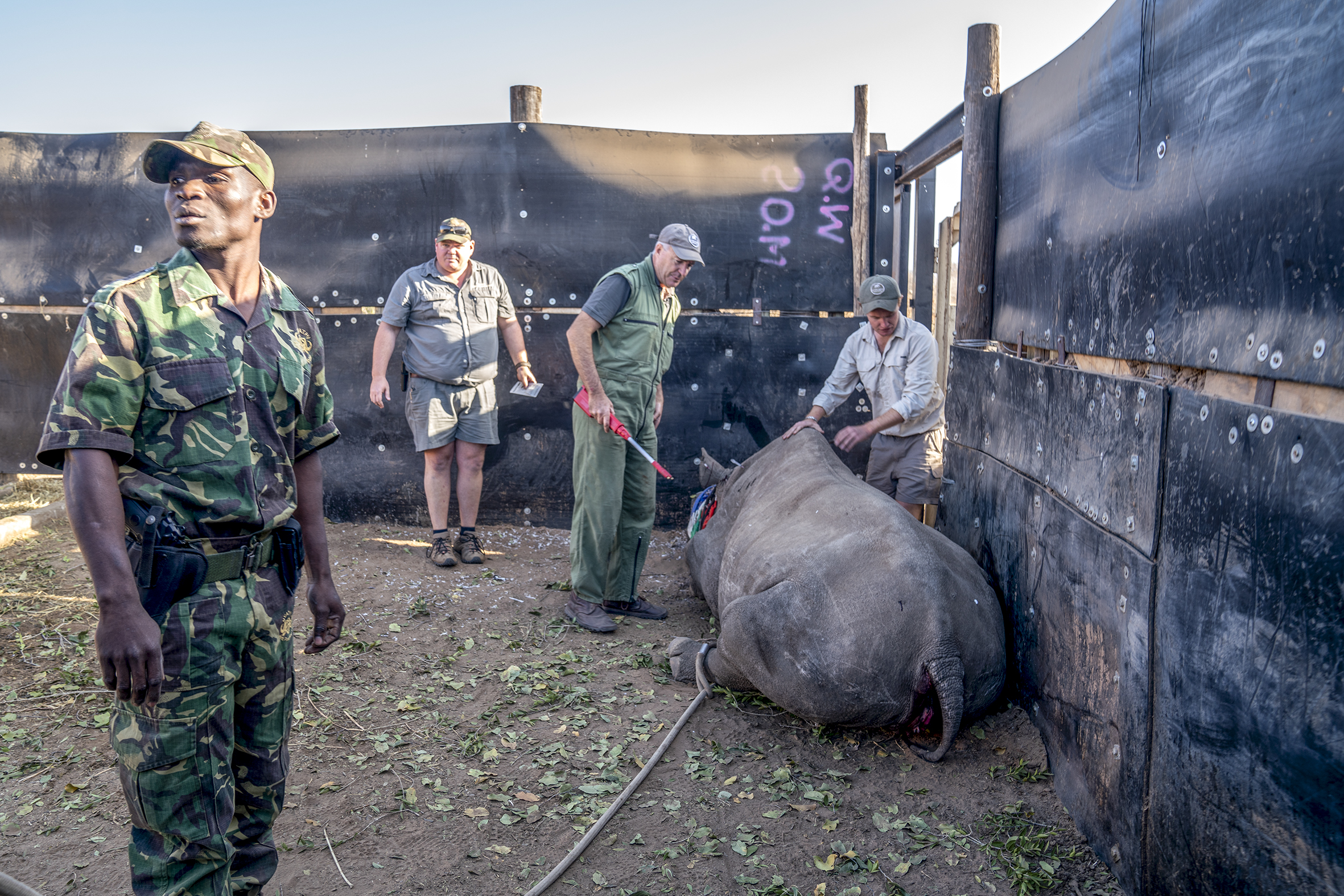
Conservationists prepare to move a sedated black rhino to an awaiting crate. (Photo: Shiraaz Mohamed)
Park manager Marius Fuls explained: “No wild animal does well in a box, but the fact that we had them in relatively small enclosures for a long time meant that they had calmed down to a certain extent, but the moment you put them in a small box, it does stress them out… it is important that the drugs they are administered by the veterinarians are the right drugs to keep them calm and to reduce that stress as much as we can.”
A rigorous process was embarked upon to identify a suitable site with the best potential to increase the range of rhinos in the Southern African Development Community region, and facilitate the growth of these populations under strong security measures and good conservation management.
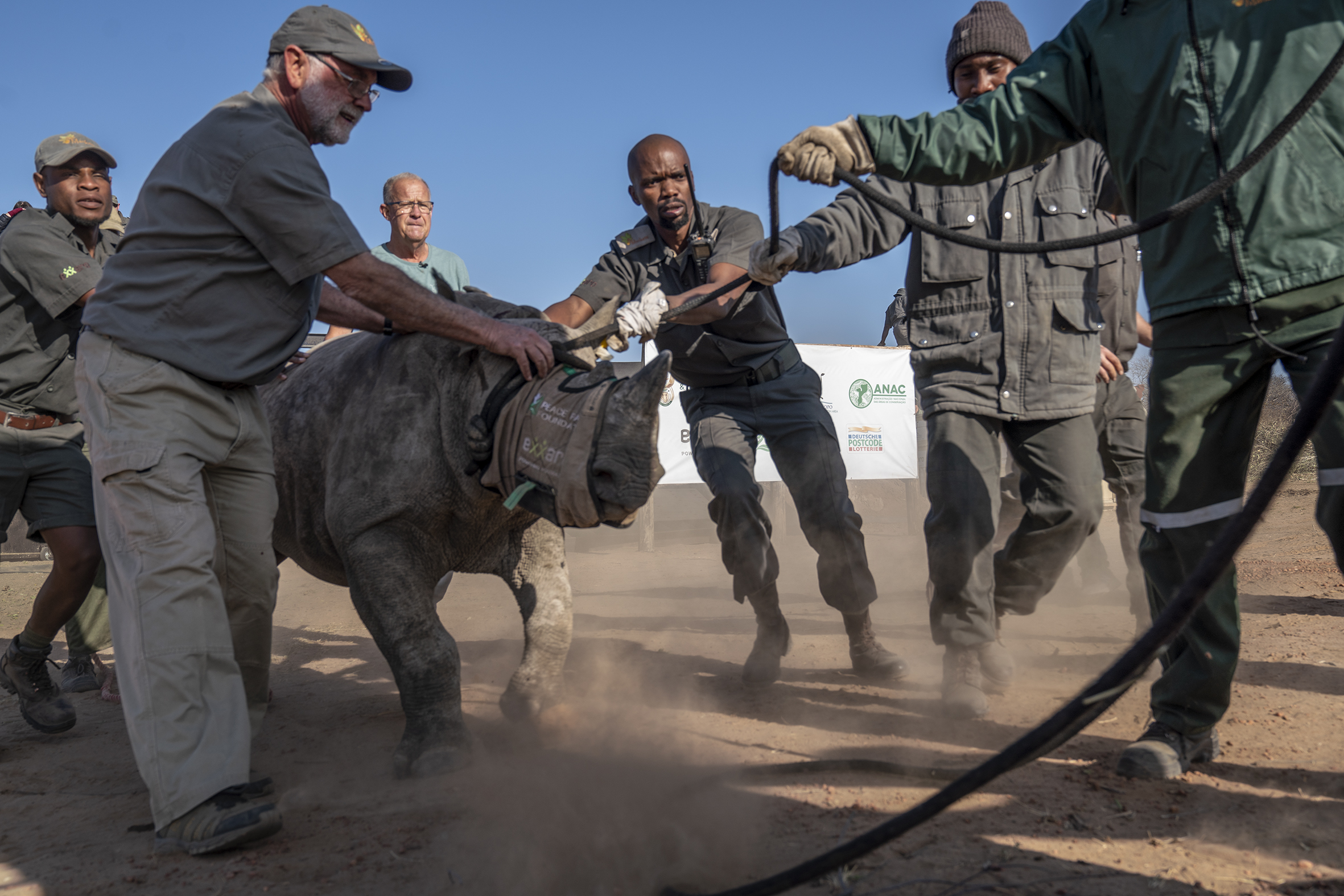
A rhino calf is led to an awaiting crate. (Photo: Shiraaz Mohamed)
Said Exxaro’s Sale Swart, “It was a very strict process… we went to a number of people to investigate, firstly, where the rhinos will be safe, because that is most important. And also where they will fit in terms of habitat and ecosystems. So we looked at countries ranging from Tanzania, Angola, Swaziland and also inside South Africa… we found the perfect match with Zinave.
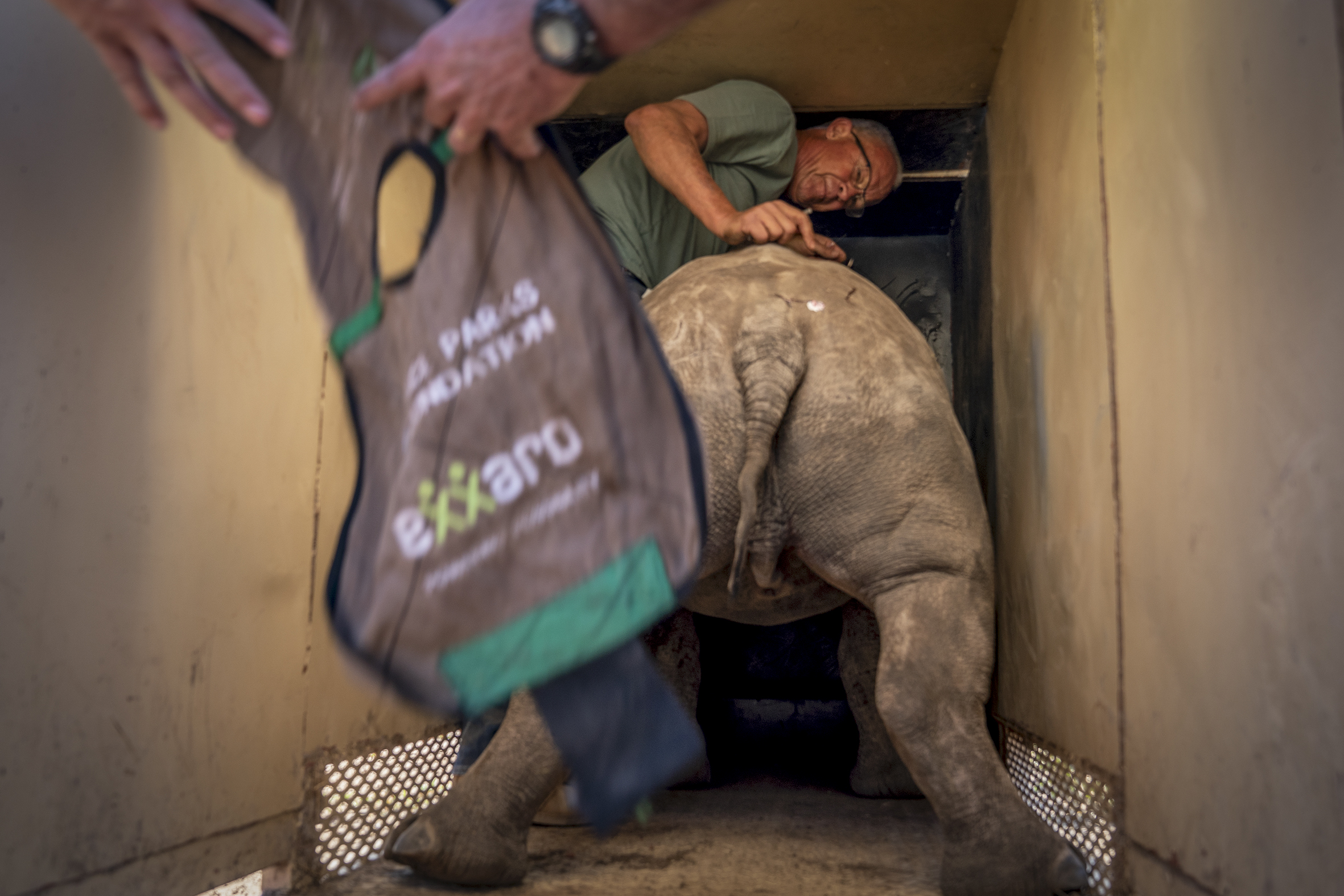
Veterinarian Dr Peter Rogers inside a crate before injecting a sedated rhino calf with an antidote. (Photo: Shiraaz Mohamed)
“It’s the first time in 40 years the rhinos will be back there.”
Pleased with the evaluation process, the governments of both countries approved the reintroduction of more than 40 white and black rhinos to a specially constructed, 186km2, high-security sanctuary within the 4,000km2 Zinave National Park.
Safety
To further ensure the safety of the rhinos, significant investment is being made in security. Swart spoke to Daily Maverick on site after the last rhino was loaded into its transport crate: “These animals are more safe where they are going, than where they are now.
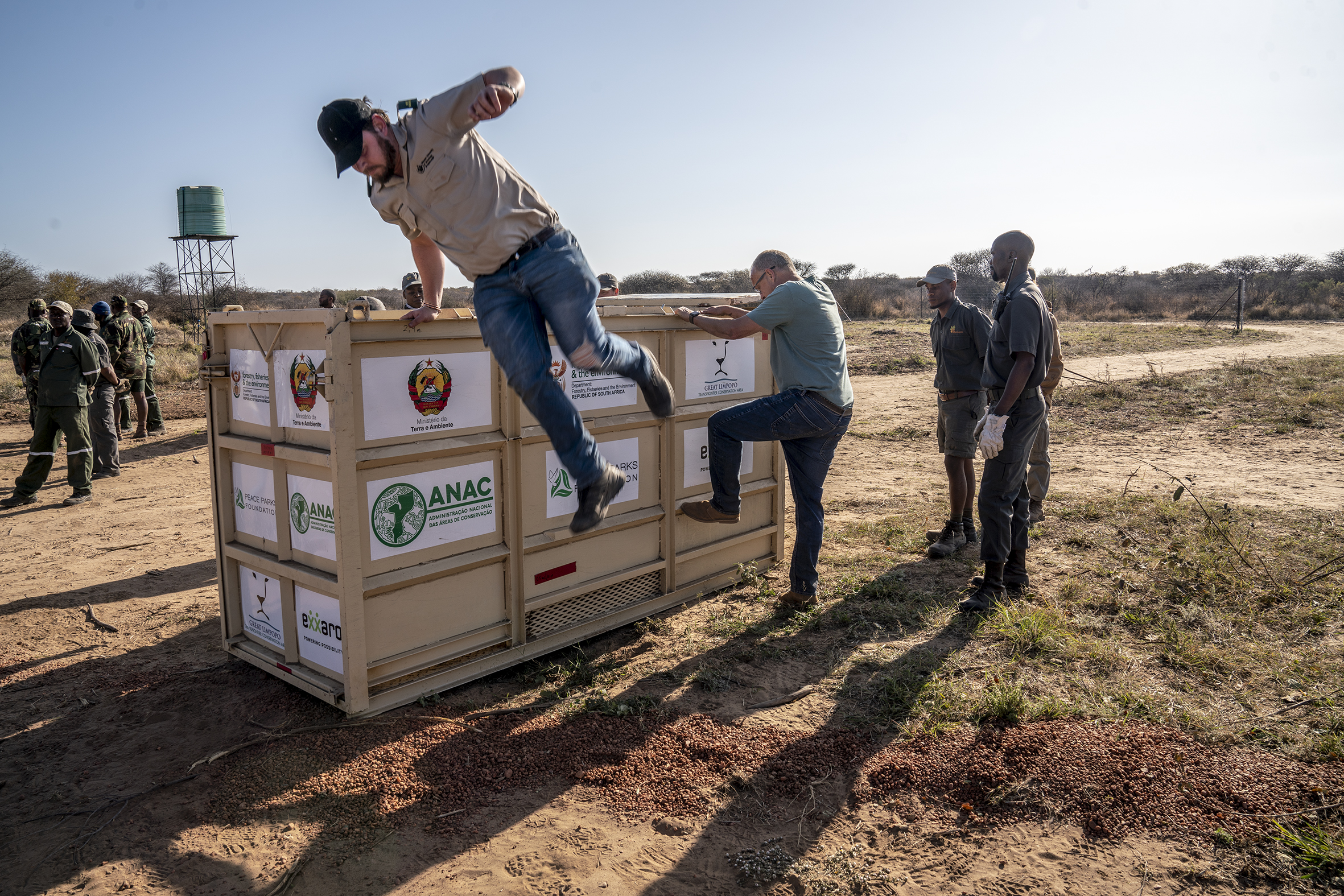
A conservationist leaps off a crate after it has been loaded with a rhino calf. Transport crates were prepared and the rhinos were given food and water in the crates to prepare them for their long journey. (Photo: Shiraaz Mohamed)
“There are far more resources going into safeguarding them… these animals will be tracked for 24 hours in a control room that is manned. They have more than 90 armed rangers that will look after them — which is more than we have here (in South Africa).”
Safety protocols include the recruitment of 32 additional rangers who have undergone specialist training in rhino protection, bringing the number of rangers deployed in the sanctuary and surrounding areas to 72.
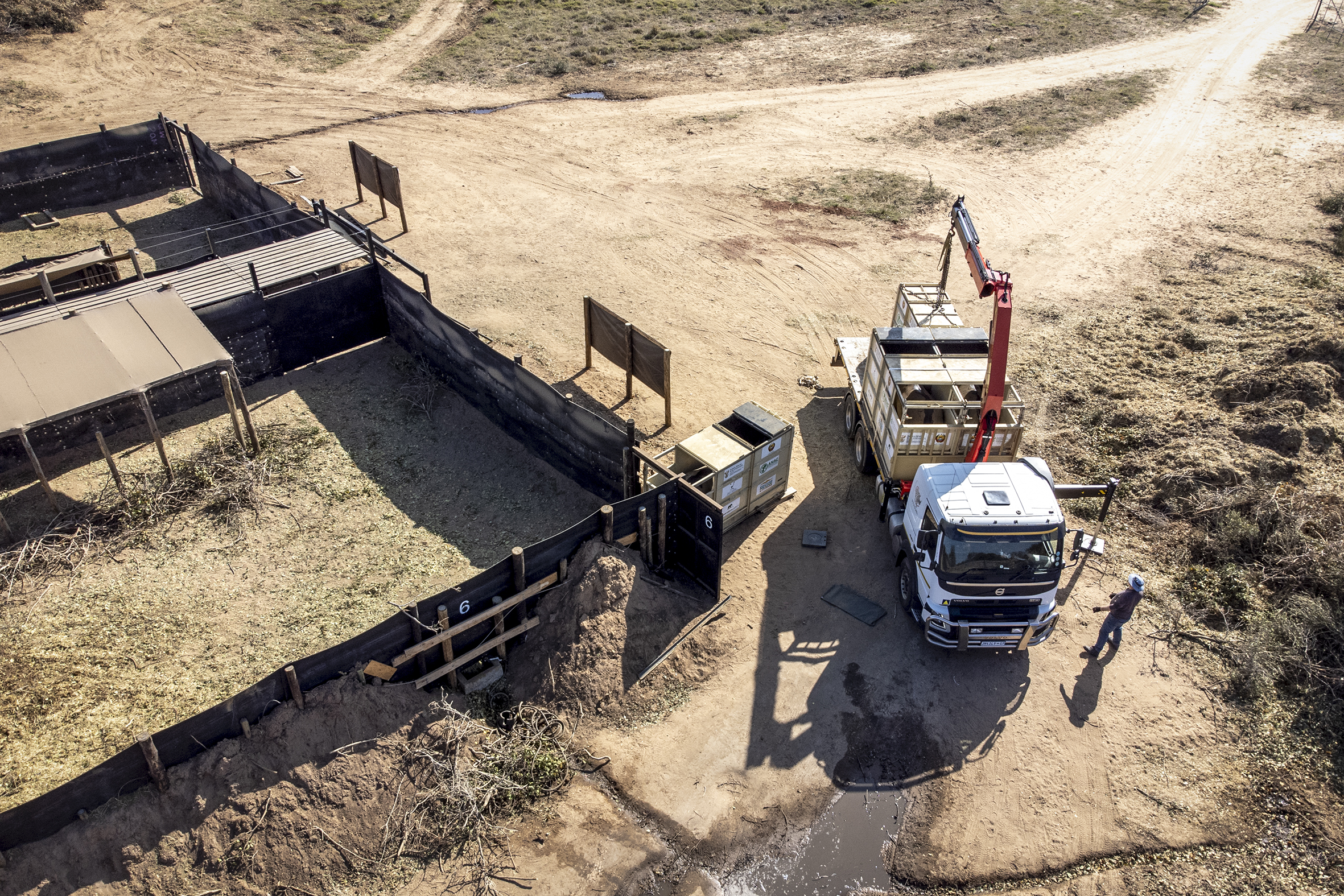
A crate containing a black rhino about to be loaded on a truck before making its way to Mozambique in the longest road transfer of rhinos yet attempted. (Photo: Shiraaz Mohamed)
A further 20 sanctuary guards will also be deployed for first-line detection of incursions. A helicopter and fixed-wing aircraft will be used by their rapid response unit and all operations will be coordinated through a dedicated control centre.
Rebuilding the rhino population in Zinave will take place over the next few years and will see more than 40 rhinos translocated to safe havens in the country and increase wildlife populations, attract tourists and support the livelihoods of local communities living around the park.
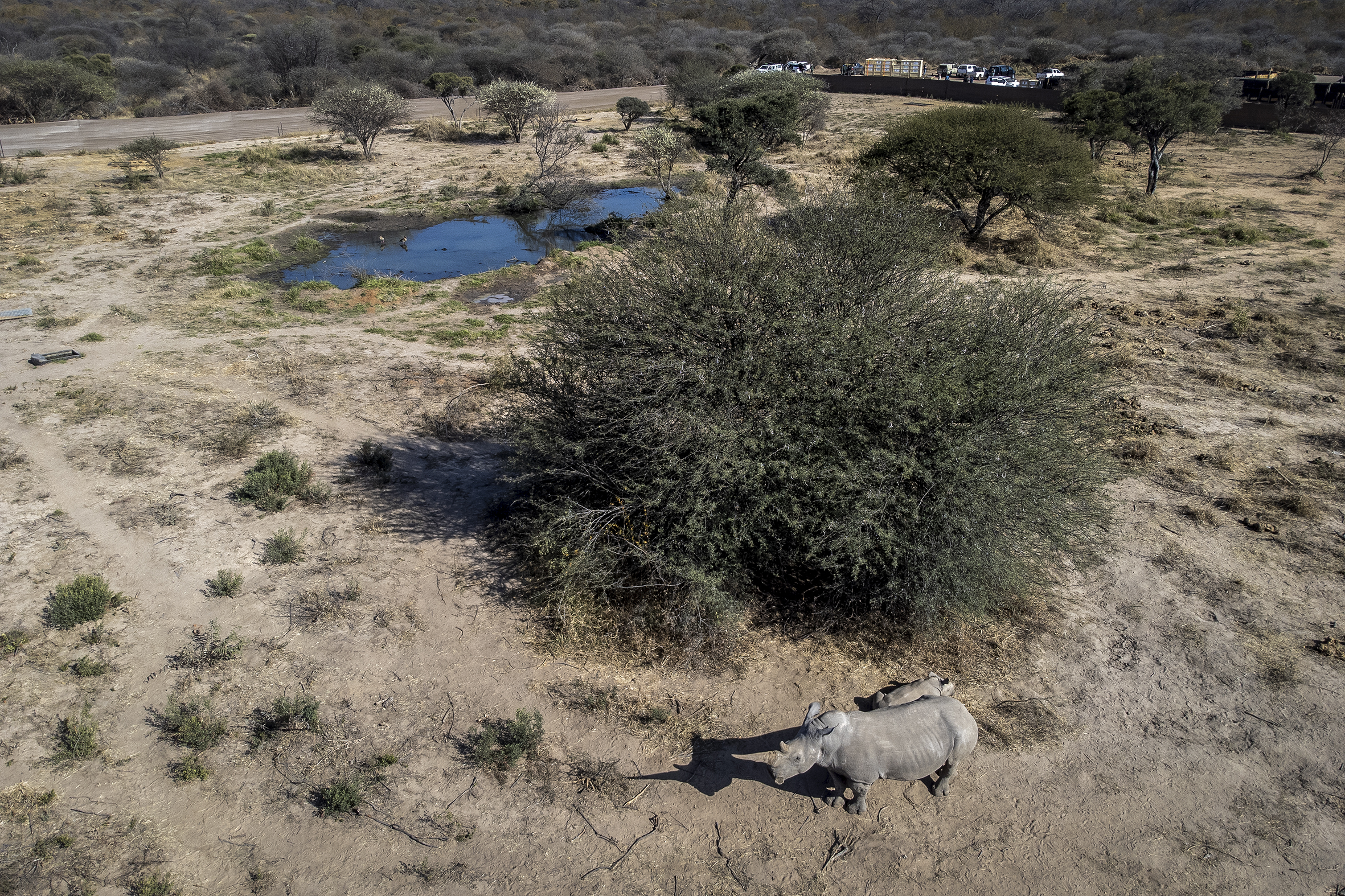
A rhino and her calf in their enclosure. (Photo: Shiraaz Mohamed)
With the introduction of the rhinos, Zinave will become the only “Big Five” national park in Mozambique. To date, 2,400 animals from 14 different species have been introduced to the park. This includes elephant, sable, giraffe, buffalo, zebra, wildebeest, leopard, hyena and a small lion population.
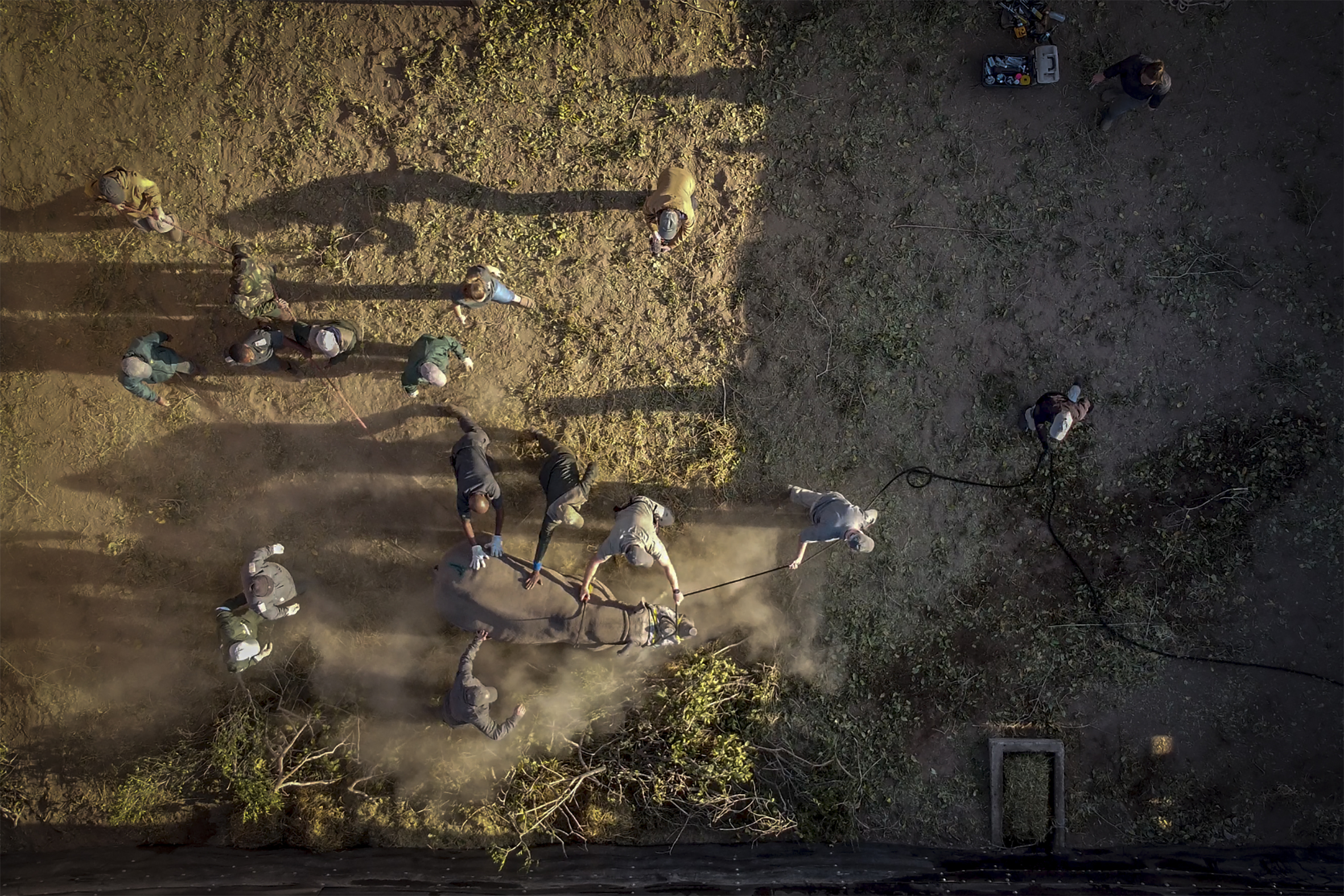
A screenshot from drone footage as conservationists prepare to move a black rhino into a transportation crate. (Photo: Shiraaz Mohamed)
Mozambique’s Minister of Land and the Environment, Ivete Maibaze, said: “With the host of stringent protection and monitoring measures in place, it is envisioned that this historic translocation will establish a viable breeding population of rhinos in a Mozambique national park for the first time in decades.
“In addition, conferring Big Five status to the park will be greatly beneficial for the emerging eco-tourism industry of this spectacular wilderness and for the communities around Zinave National Park.” DM


















 Become an Insider
Become an Insider
Comments - Please login in order to comment.